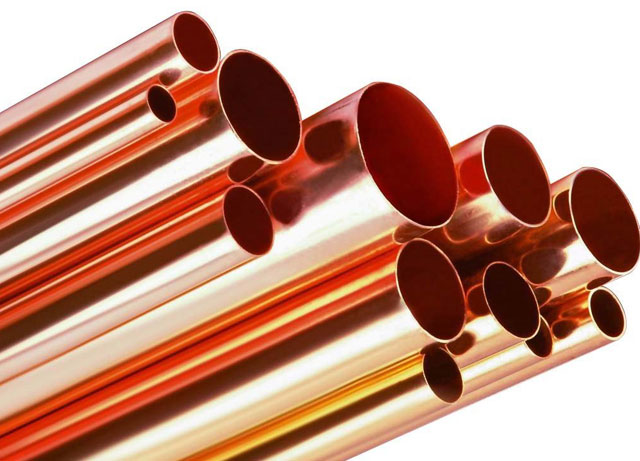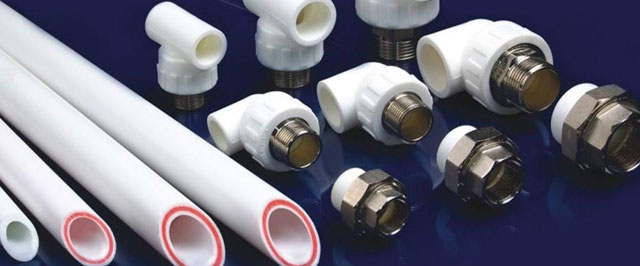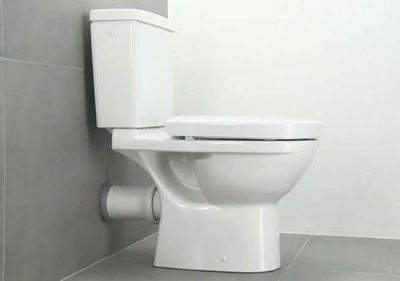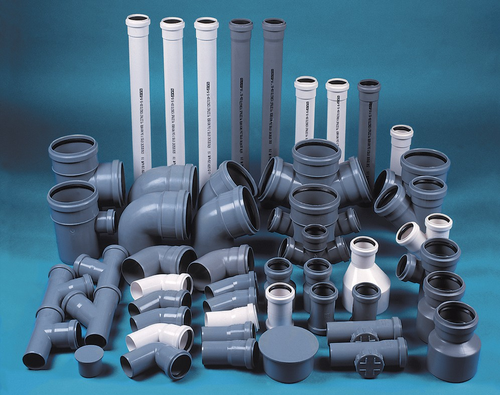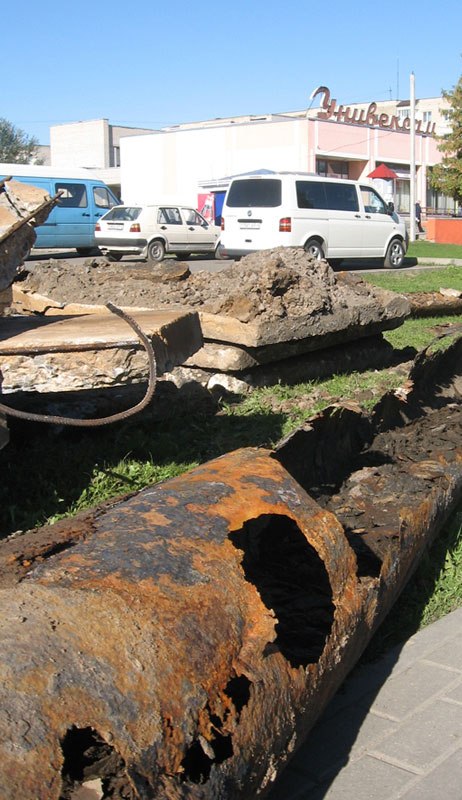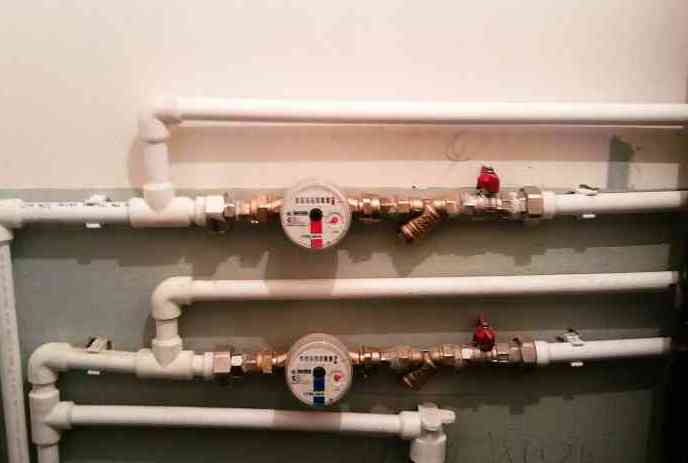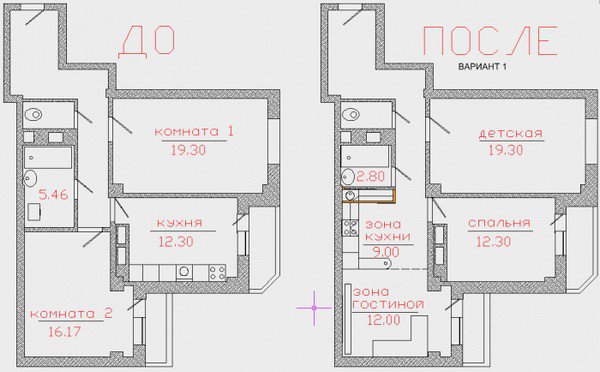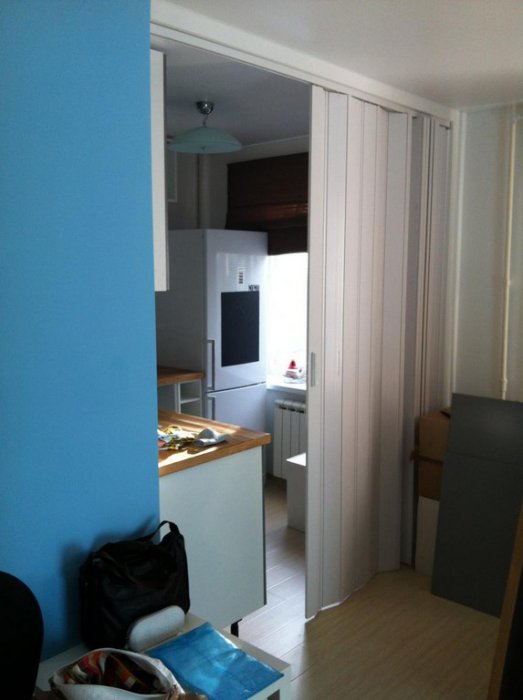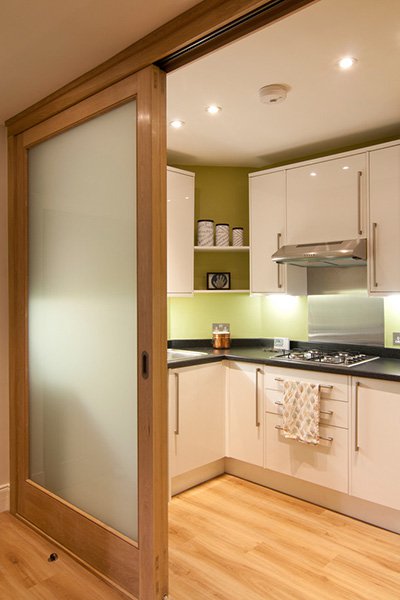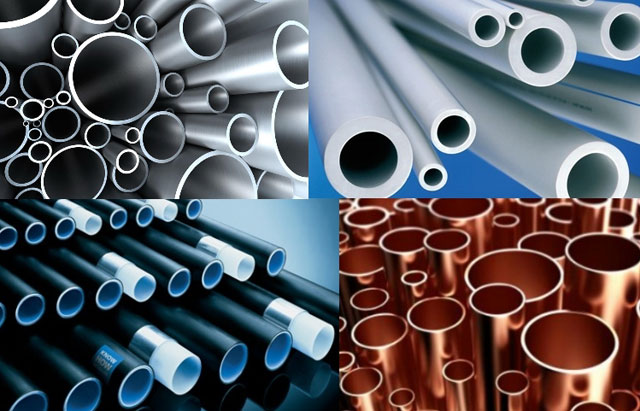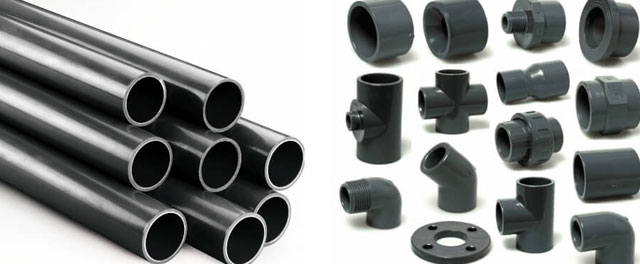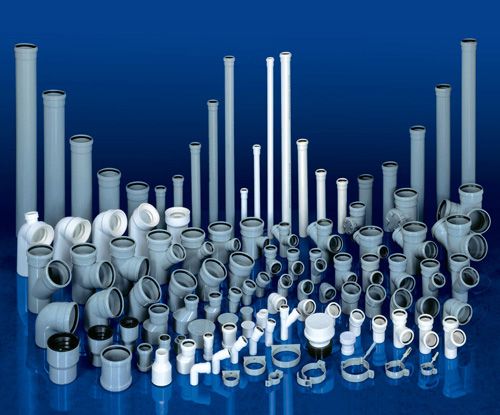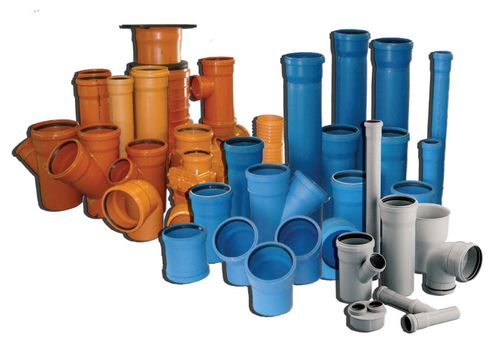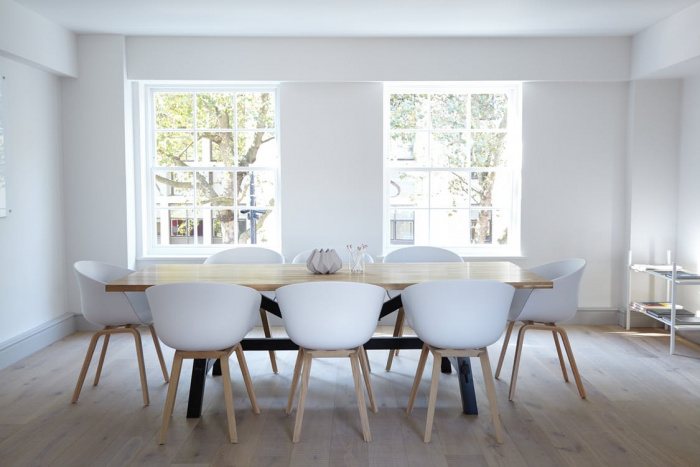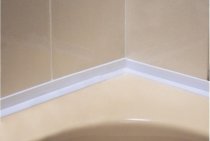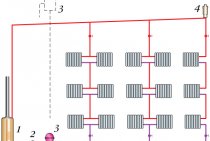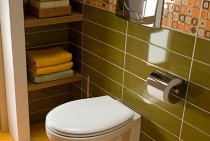Plumbing pipes for hot water supply and heating systems
In the case of pipes through which hot liquid must pass, everything is different. The most important factor is the ability of the material to withstand high temperatures for a long period of time. In addition, it is necessary to take into account the much lower degree of plaque on the inner surface of the wall, which is characteristic of hot water supply and heating.
A completely suitable material for such a system would be "black" steel, because the missing condensate will not allow rust to appear. True, in such a system, the liquid must be constantly present, and the system itself must be airtight. Even a short drain of water will lead to the rapid appearance of rust.
Even better in such conditions, pipes made of stainless or galvanized steel will show themselves. Copper pipes would also be an excellent option - however, you will have to come to terms with the very high cost of such material. In addition, in this case, thermal insulation will be required, which will increase the cost of arranging the pipeline by an order of magnitude.
Reinforced polypropylene demonstrates the best performance among polymer pipes. Due to the layer of aluminum foil and fiberglass, polypropylene retains its shape.
In principle, polymer pipes for plumbing, water supply and sewerage are a good choice, you just need to carefully study its characteristics before purchasing. You need to understand that the price of modified polymer pipes is quite high and quite comparable with metal counterparts, so you have to weigh all the pros and cons of different materials.
Possible problems when moving the toilet
The increase in the free space of the toilet room pushes for thought and reinstallation of the bathroom. Is moving the toilet to the side realistic?
Yes, but for plumbing to function properly, you should know some subtleties.
- The likelihood of blockage increases with distance from the riser, because sewage overcomes a long way.
- Flushing water is accompanied by an unpleasant odor (sewer stench) and gurgling sounds. A high vacuum is formed in a long pipeline, which leads to the suction of water from the appliances (located nearby plumbing) and the failure of their hydraulic valves.
Using a sololift
Installing a sololift is a great opportunity to equip a toilet room where gravity sewerage is not available. The principle of operation of the sololift is based on the forced removal of feces (drainage).
Fecal pumps (sololift) are quite powerful devices equipped with special choppers (blades). The sololift device allows not only pumping out sewage, but also grinding solid particles, pushing the resulting mass (solid suspension) into the sewer system. Compact pumps are usually placed inside or directly behind the cistern.
What is a good sololift for sewers? Can:
- forget about all the restrictions regarding the riser and the toilet - it is allowed to connect pipes of small diameter (18 ... 40 mm), and the long limit is shifted towards 100m horizontally and 7m vertically;
- refuse to perform additional construction work.
However, there are certain criteria for choosing such equipment. So, when planning the parallel connection of household appliances (shower, washing machine), it is better to focus on models that are able to work in conditions of relatively high temperatures of the discharged water. Otherwise, you can not count on long-term operation.
For short-term pumping of hot liquids, you can use a device that provides protection for half an hour (no more).But this embodiment is not designed for long-term operation at elevated temperatures.
If we talk about the technical side of the issue, then the installation of a sololift is practically no different from the usual transfer of a toilet bowl. The difference is in laying down a slope of a longer sewer pipe. The requirements for installing the grinder pump are prescribed in the instructions (attached to the device) and must be followed exactly.
WATCH VIDEO
The unit is also unpretentious for operational maintenance. It needs only periodic cleaning, for which special liquids have been developed that remove deposits from the walls.
The only drawback is energy dependence (it is impossible to function when the electrical energy is turned off).
Recommendations for the installation of the toilet
With the right approach to solving the issue, such problems can be avoided. The transfer of the toilet bowl from the riser is a process that is regulated by current regulations (SNiP).
- Blogger
To ensure the necessary slope, sometimes you have to install the toilet on the podium
- Use of pipes whose diameter is in the range of 50 ... 100 mm. The optimal section is considered to be 100 mm, which is brought to the toilet (the minimum risk of a vacuum or a “plug” from sewage).
- The maximum distance from the toilet to the riser is 1.5m. If the pipe is longer, the capacity of the drain tank will not be enough to push the fecal matter. They settle on the walls of the pipeline, and a blockage is formed.
- Observance of the correct slope. For each meter of pipeline, it is 2 cm (for a section of 100 mm) or 3 cm (for a 50 mm section).
With an underestimated angle of inclination of the drain, 100% clogging of the sewer is guaranteed, since the flow rate of the liquid is reduced. If the slope is too high, the flow develops excessive speed, which causes solid particles to accumulate in the pipe. As a result, the flow of water is blocked.
The easiest way to get the required slope is to provide a podium for installing the toilet, lifting it above the surface (sometimes by a significant amount). Here you can hide plumbing communications.
Lack of right angles when laying a new sewer. If this condition is not met, installation at an angle of 45° is allowed (two such angles instead of one straight).
If you put the toilet in the apartment, taking into account these simple rules, then the likelihood of a blockage will be minimized (drainage is discharged by gravity).
In practice, to move the toilet, you will need to perform a certain sequence of actions:
- Mark the distance that you can move the bathroom. You will need to fix one end of a one and a half meter twine on the riser and draw an arc with chalk (tied to the other end of the rope).
- Choose the most suitable location for the toilet and install it. It is advisable not to leave the maximum distance zone marked on the floor.
- Measure the height difference between the center of the drain pipe and the floor. Compare the received data with the height of the inset point. If it turns out to be higher, you will have to build a podium with which the drain pipe rises 30 mm above the riser tee (tie-in point).
- Fix the plumbing on the podium (floor) and connect it to the drain system, ensuring the pipeline is as straight as possible (avoid right angles).
It is not necessary to carry out a hard supply of cold water to the toilet, it is much easier to use a long flexible hose.
- Blogger
The pump should be placed in the wall behind the toilet
Another situation is also possible when it is necessary to move the pipes in the toilet to a distance of more than 1.5 m or compliance with SNiP is a difficult task. What to do?
There are two solutions, the first of which is the transfer of the sewer riser, and the second is the connection of specific equipment (forced sewage). It would be preferable to install a sololift.
Communications
Moving the kitchen to a corridor or another room entails the need for a device for supplying water to the sink and dishwasher, as well as draining domestic wastewater into the sewer. The owners think about this, for some reason, in the last place, although it is this factor that very often becomes decisive when redeveloping the space of an apartment.
When installing water pipes, there are practically no problems. They can be placed both under the ceiling and in a screed under the floor covering, pass them through small holes in the wall or immure into strobes. Difficulties arise, as a rule, with a sewerage device that needs to be laid at a certain slope, and the diameter of a typical pipe is larger than for a water supply system, 50 mm, which often creates an obstacle when passing through load-bearing fences.
When conducting communications to the "new" kitchen area, one should not forget about ventilation, which rids the room of fumes and odors that are in the air during cooking. A well-laid box with a hood installed above the stove will protect the room from smoke and excessive humidity. It will necessarily need to be connected to the exhaust ventilation duct located on one of the walls of the former kitchen, but in no case - to the ventilation grills located in the bathrooms. Otherwise, unpleasant odors from time to time, if not constantly, will appear in the kitchen. When connecting the ventilation pipe to the channel, its overlap or narrowing is not allowed.
Installation of the ventilation duct is accompanied by some inconveniences:
- to ensure good traction, on long horizontal sections it will be necessary to install an additional fan and, as a result, a silencer;
- to improve visual perception, the pipe is hidden behind the suspended ceiling structure, which is impossible even with a standard room height;
- for the possibility of laying the box without kinks, holes of considerable diameter are punched in the walls.
The transfer of the kitchen is also accompanied by the laying of electrical wiring. For the convenience of the hostess, in the working area it is necessary to provide lighting and the required number of sockets, as well as single lamps and lamps. Coziness and comfort will appear in the kitchen only if it has sufficient lighting, the brightness of which can be adjusted according to the situation and your mood.

The nuances that owners face when moving a kitchen into a room are much more than those previously listed. Before starting work, you should carefully consider all the difficulties that, with varying degrees of probability, may occur in the redevelopment process. With an irresponsible approach, the repair will stop somewhere in the middle stage, when it will not be possible to move further for various reasons, and it will be too late and pointless to return back.
Unfortunately, there are often situations in which the material resources spent on moving the kitchen do not justify themselves. Although there are also hopeless living conditions, when it is extremely difficult for a family to manage without redevelopment of an apartment.
Bathroom redevelopment
Separate toilet location
In the case of a separate bathroom, the layout is somewhat simpler.
Let's start with the simpler case where the toilet is separated from the bathroom. It is simpler because in such a toilet, as a rule, there is one device. In the maximum configuration, a bidet can be added if the size of the room allows.
We will immediately announce the norms for the distance from the wall to the toilet, adopted in SNiP 2.08.01-89 * "Residential buildings":
- The minimum dimensions of the toilet room are 800 mm wide and 1200 mm long. In this case, the average dimensions of the compact in length are taken equal to 650 mm, and in width - 350 mm;
- The height of the toilet bowl according to the standard should be 400 mm, the height of the tank - 815 mm, the height of the drain pipe - 185 mm;
- If a bidet is installed in the room, then the gap from the edge of the compact bowl to the middle axis of the bidet bowl must be at least 380 mm, and for maximum comfort - at least 450 mm. The same norms if there is a washbasin nearby;
- The minimum distance from the toilet to the wall located in the front (front) should be at least 530 mm, and for maximum comfort - at least 760 mm;
- The space from the middle axis of the bowl to the side wall is at least 400 mm, for optimal operation - at least 450 mm.
Minimum and optimal setbacks from the toilet bowl to side and frontal obstacles.
Important! Official norms are mandatory for public and private construction of facilities. The owners of the apartments may not fulfill them and place the devices at their discretion, since their operation and maintenance is carried out by them
It should be said that these standards are relevant in the case when the toilet is spacious enough, and you do not know where it is better to put this or that device. However, in most post-Soviet apartments, this problem does not arise, since the dimensions of the toilet are minimal, and the toilet is placed in the middle of the cubicle against the back wall.
The photo shows that the layout of the "Khrushchev" houses does not leave much room for maneuver.
Important! Most toilet cubicles of the Soviet era have dimensions in which the installation of a compact exactly in the middle of the room near the back wall gives the very minimum distances to the side walls and the front door
Combined bathroom
A wall-mounted toilet allows you to save space, which is especially important in combined bathrooms.
If the toilet and bathroom are located in the same room, the task is a little more complicated because you have to rationally place several plumbing fixtures in a relatively small room.
Additional problems may be caused by the need to install household appliances - a washing machine, boiler, etc. At the same time, the most acceptable layout option involves not only a rational and convenient, but also a harmonious arrangement of all objects in terms of design.
This is another feature of modernity: people want to live comfortably and beautifully, and this, as you know, cannot be forbidden.
The price of comfort is high, the price of beauty and luxury has no limit.
If the bathroom is large enough, then it is advisable to divide its premises into zones: a shower or bath area, a washbasin area, a toilet area, etc. However, in most Soviet and many modern apartments there is no such expanse, and the task is reduced to fulfilling the minimum requirements for the distance between adjacent devices, devices and walls and the presence of aisles.
Often a compact and a bidet, and sometimes a washbasin, are placed in a line against the wall. In this case, there should be a gap of at least 20 cm between adjacent devices, preferably 30 cm. This refers to the distance from edge to edge.
An example of rational planning.
If there is a sink next to the toilet, and the approach to it is from the side of the device, then you need to remember about the space for tilting: while washing, the person leans towards the sink and steps back a little. The minimum space for this must be at least 70 cm.
In order not to rest your forehead against the mirror, remember the space for tilting your torso.
Important! The dimensions of the distances to the side walls are accepted unchanged - 38 - 45 cm from the middle axis of the bowl to the wall. Similarly, the requirement for a distance in front of the toilet does not change - it is at least 53 cm, for comfortable use - 76 cm
Here you can only make adjustments in the big direction.
In some situations, a toilet in the wall is the only salvation.
For combined bathrooms, the issue of saving space is more relevant than ever. One example of such savings is a toilet with a tank in the wall.Do-it-yourself installation of this model is somewhat complicated, but the use of modern installations and sets with frames simplifies this task.
Steel structures
Until relatively recently, almost all plumbing pipes were steel. This is a cheap type of material, to which you can always easily find the right fittings.
The main advantage of the material is strength. Thanks to which they withstand pressure drops, they are not afraid of high temperatures.
At the same time, condensation forms on such pipes. In addition, installation will require the use of special equipment and the skills of a master, welding and threaded connections are required.
If the installation is performed at a high-quality level, then steel plumbing pipes will have a long service life, up to 40-50 years.
Summarizing the shortcomings, we can note:
- complex and expensive installation;
- the formation of lime, which leads to the "overgrowth" of pipes;
- the formation of corrosion;
- high electrical conductivity.
Experts recommend using plumbing and sewer steel pipes in cases of replacing individual parts of an old water supply system in order to avoid combining and combining different materials. In other cases, it is better to abandon steel structures. And if you need to connect different materials, it is easiest to use special adapters.
Cold water
materials
Non-galvanized steel
. Black steel pipes for plumbing without an anti-corrosion coating are the worst choice for cold water plumbing. Cold water is always condensate, that is, a combination of dampness and air. If so, the pipes will quickly rust. A layer of paint will only partly slow down this process. In addition, a steel pipe in cold water is rapidly overgrowing from the inside, reducing its throughput.
Steel pipes and cold water - a bad combination
-
Galvanized steel
. Everything is much better here: only areas where the zinc coating is broken can rust - threads and welds. Deposits in the pipe are not deposited. The disadvantages include the complexity of assembly and the large weight of the pipe. -
Copper
. Copper plumbing pipe is an almost eternal material, aesthetic in appearance and not afraid of dampness. But dear. In the case of cold water, its cost is simply unreasonably high.
-
Stainless steel
. Cheaper than copper, but more expensive than zinc. Extremely complex processing was added to the laboriousness of assembling the water pipe: it is simply unrealistic, and the turner on it can spoil the cutters. However, cold water plumbing, assembled from stainless steel, is also almost eternal and much stronger than copper. -
Polyethylene and polypropylene
. With regard to cold water, their properties are the same: light, cheap materials, the life cycle of which under these conditions approaches the duration of a human life. If you plan to replace cold water plumbing pipes, this is an ideal choice.
Dimensions
Copper plumbing pipes can have a minimum diameter: if there are filters for a standard apartment, pipes with a diameter of 12 millimeters will suffice. It does not grow over time, while thin walls provide sufficient clearance with a minimum outer diameter.
Then, in ascending order, a steel pipe with a diameter of 15 millimeters follows. with a diameter of 16 millimeters is the most popular among this material. Polypropylene used for cold water pipes and start from 20 millimeters. The reason for the latter fact is the thick walls, which, with a constant outer diameter, provide less clearance compared to other materials.
Prohibited and allowed options
Cases when it cannot be transferred
- After redevelopment, the kitchen room will be located directly under the bathroom of the neighbors from above.
This option can be obtained if you increase the area of the new premises due to the square meters of the bathroom by demolishing the partition.
There are exceptions here.
- This can be done if you have a two-story apartment.
- You can do this if you live on the top floor.
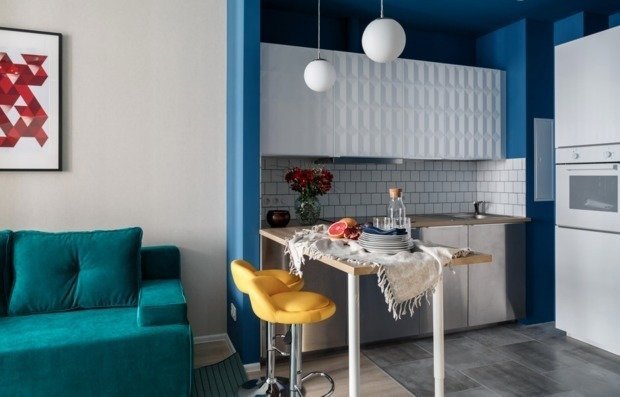
- Under the new kitchen after redevelopment are the living rooms of the neighbors.
There are exceptions here too.
- You can do this if you live on the first floor.
- This can be done if there is a non-residential premises under you. As a rule, these are premises for commerce on the first floors of apartment buildings. They can occupy one or two floors. With housing on the second or third floor, there is a chance to agree on the project in accordance with all the rules.
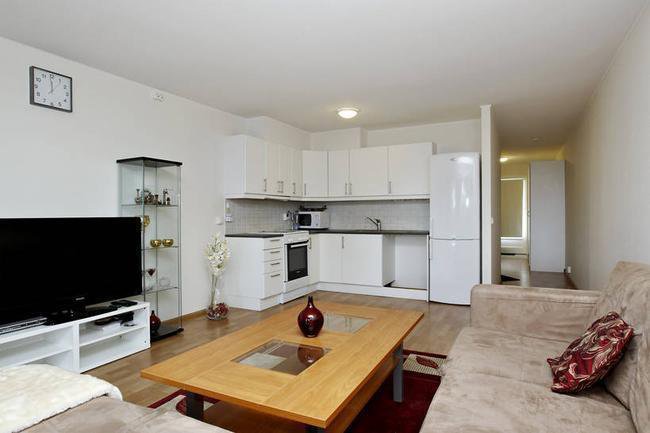
- The neighbors above the kitchen will have a toilet or bathroom.
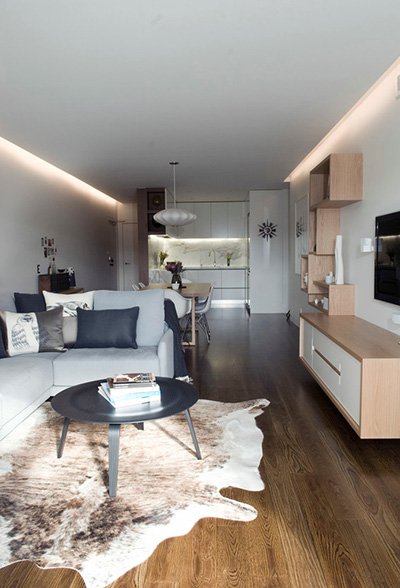
- The kitchen is gasified.
It is impossible to demolish the partition from the living room in a gasified room, because. according to the rules, it should be isolated. Let's make sliding doors.
Exception: you can legally refuse gas in your apartment in a single person by applying to the municipality. A special commission decides on a project for the reconstruction and transition to a new billing for electric stoves. After making changes to the technical plan, you can coordinate the time of work with gas services. The contract with old service providers is terminated and a new one is concluded with electricity suppliers.
- From the kitchen there will be an exit to the toilet or bathroom.
5 valid transfer options
Here are a few options for when it is realistic to get an agreement:
you live on the ground floor and there is no neighbors bathroom above you;
one floor below is a non-residential premises;
you have a two-level apartment;
the neighbors from below also legalized redevelopment (and already under them (neighbors) there is probably non-residential premises).
you live on the top floor and expand the kitchen, combining it with a bathroom
There is an important note here: the main kitchen equipment (stove, sink, etc.) can only be located above non-residential premises.. Another possible example of redevelopment
Ventilation is carried out along the ceiling (hidden by a stretch or suspended ceiling), sewerage runs along the floor, and water pipes run next to the new sink. Combining the bathroom and moving the kitchen to the living room. It is easy to transfer communications here, because the wall borders the bathroom. But it can be difficult to agree on the redevelopment of corridor partitions
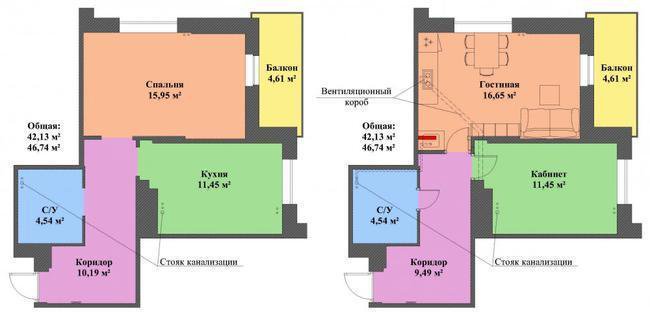
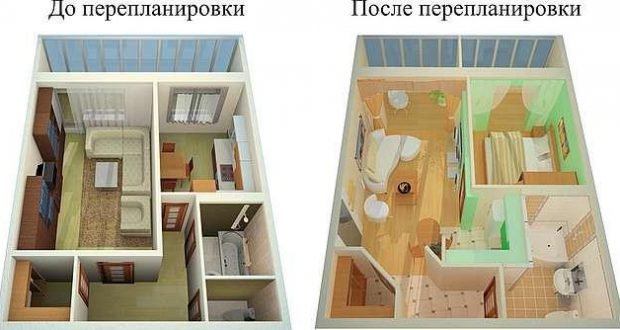
There is another option, although it is hardly possible to call it a transfer - the demolition of the partition between the kitchen and the living room. In Khrushchev, such an idea receives the most approval from the housing inspectorate, because. the wall between the kitchen and living room is not load bearing.
Furniture and decor elements
Does the interior of the toilet require additional furniture? We have already decided that the presence of a washbasin in the toilet will be a big plus for comfort. Similarly, some other furniture is also necessary, because the restroom is a convenient place to store many things, for example, cleaning products, washing powder and other things.
If you decide to make a toilet room with a sink, then you can give preference to the “moidodyr” type option. This is a washbasin built into a small cabinet in which you can store many useful things.In addition, you can place a high rack behind the toilet. Place it in such a way that the toilet is built into the bottom of the rack. As for the materials for the “moidodyr” and the shelving, wooden furniture is suitable for a classic restroom, and furniture made of plastic, glass or metal will be well decorated with modern design.
The interior of any toilet involves the use of mandatory elements: a brush, a paper holder, a towel hook, a trash can, an air freshener. In addition to them, you can very well add details that will make your toilet more powerful and homely. On one of the walls you can hang a beautiful poster in a stylish frame. Not far from the toilet, try to place a small magazine rack for newspapers, books and magazines, because many people do not mind reading in the toilet. You can place flowers on the shelves. Opt for artificial flowers or hardy potted live plants. And, of course, scented candles placed around the entire perimeter will greatly decorate the design.
Plumbing pipes for cold water supply
The presence of cold water is required in any building, regardless of its functional purpose, whether it is an apartment building, a private house or a warehouse. Cold water supply is often carried out even in places where heating or sewerage is not required at all.
Materials for arranging the pipeline necessary for supplying cold water can be:
- Galvanized steel;
- Stainless steel;
- Copper;
- Plastic.
Zinc coating provides complete protection of the pipe against corrosion. Unfortunately, not everything is so smooth - if the zinc layer is damaged at least in one place, then nothing will prevent the formation of rust. The problem is that welding or threading inevitably damages the zinc layer.
Naturally, the use of pipes made of "ferrous" (non-galvanized) metal for plumbing is impossible: condensate always gets on the surface of the pipe, because of which it will be covered with rust. In turn, rust violates the integrity of the pipeline, and it can no longer perform its functions.
To protect steel plumbing pipes from corrosion, you have to use workarounds. The most common of these is coating the pipeline with paint, but even this does not save the pipe from the effects of corrosion. In addition, the inner cavity of a non-galvanized pipe overgrows over time, so its throughput drops significantly.
Problems can be avoided by using stainless steel pipes. Of course, this option has disadvantages - high cost compared to conventional steel, and difficult installation, especially in the absence of threads. If we talk about the positive qualities, then stainless steel is characterized by maximum strength and long service life.
Popular plastic pipes
This type is, if not the most popular, then in demand by consumers. From such material, both internal and external water pipes are installed.
Plastic pipes have high strength, low cost, have a decent appearance, do not corrode and have a long service life.
Even a beginner can install plastic structures using a soldering iron, special glue and fittings.
Plumbing plastic pipes include several types:
- PVC. They are inexpensive and practical. Plumbing PVC pipe can be used for hot and cold water, as well as for the installation of a heating system. The most rigid types of PVC are connected with fittings, adapters and special glue.
- The widest scope of use for polypropylene pipes. It is not difficult to connect this material using coupling and butt soldering.
- Polyethylene constructions are durable and elastic.If the water freezes, they will not burst, and soldering is used to connect them. Cross-linked polyethylene allows them to be used for hot and cold water.
Metal-plastic pipes
This kind of material is easy and convenient to install and replace. He occupies one of the leading positions. The material is a construction of three layers - the frame is made of metal, sealed on both sides in plastic.
Metal-plastic is able to withstand water temperatures up to +75 C, as well as pressure drops. The service life reaches 30-35 years. Fittings are used to connect pipes.
The disadvantages of metal-plastic products include:
- The material does not withstand too high water temperatures;
- The need for regular tightening of connections;
- Low level of connection strength.
Metal-plastic pipes are best used for the installation of plumbing structures in the country. An apartment or house requires other practical options.
Transfer of the kitchen to the living room approval 2018.
A lot of people want to do just such a redevelopment. We are often asked the question “Is it possible to legalize the transfer of the kitchen to the living room?”. Unfortunately, the only answer is no. There is paragraph 24 of the Decree of the Government of the Russian Federation dated 01.28.2006 No. 47, which prohibits the placement of a kitchen above the living quarters of neighbors below. In this case, these premises should be declared unfit for habitation. The same can be said about a simple increase in the kitchen at the expense of the living room.
It is possible to legitimize redevelopment data only in one case - if non-residential premises are located under you, that is, your apartment is located on the first or second floor. Then the above paragraph of the Decree is not violated and the transfer of the kitchen to another room can be carried out with obtaining official permission for this.
Before moving on to the rest of the nuances of reorganizing the kitchen, we will make a small digression for those who are not going to go through all the instances on their own.
Is it possible to move the kitchen to the room
First of all, it is necessary to deal with all legislative and domestic nuances. The transfer of the kitchen in a new building is considered redevelopment. And if you live in an apartment building, then your freedom to rearrange and redevelop is seriously limited. It is necessary to reckon with the requirements of a number of legislative acts and not violate the rights of other residents. Therefore, the owner of the apartment is required to obtain permission for redevelopment from the local authorities. For St. Petersburg, these are regional interdepartmental commissions created under the administrations of the city's districts.
In case of ignoring the law, according to Art. 7.21 of the Code of Administrative Offenses of the Russian Federation, you are threatened with a fine of one thousand to two thousand five hundred rubles, and you will not be able to dispose of your apartment, for example, to sell it. Moreover, you will be obliged to return the premises to their previous appearance, which will require a lot of expenses.
Theoretically, you can move the kitchen even to another room, even to the hallway or utility room. In practice, you will not always be allowed to carry out the transfer.
